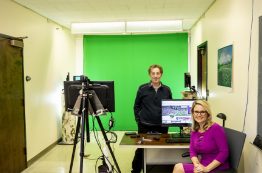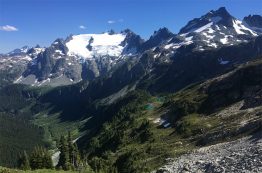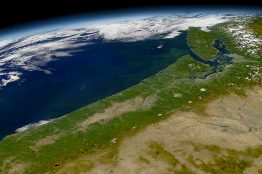In 2017, University of Washington ichthyologist Luke Tornabene was inside a small submersible called Idabell near the island of Roatan, Honduras. Sitting next to him were a masters’ student in his lab named Rachel Manning, and a pilot. They were collecting samples of marine life 550 feet deep when they spotted an unfamiliar bright blue and yellow fish. “We knew it was something new before we even got it into the collection tube,” Tornabene says, excitement still clear in his voice.
Read more »UW’s new broadcast meteorology course is first on West Coast
The University of Washington has long boasted one of the country’s top programs in atmospheric sciences. Now, the UW is also teaching undergraduates how to share that knowledge online and on TV as a broadcast meteorologist. The Media & Meteorology class, launched in winter quarter, is open to students from across the university who are taking or have passed a prerequisite introductory courses in atmospheric sciences.
Read more at UW News »Rethinking land conservation to protect species that will need to move with climate change
All plants and animals need suitable conditions to survive. That means a certain amount of light, a tolerable temperature range, and access to sources of food, water and shelter. Many of the existing efforts to protect plant and animal species across the United States rely on information about where these species currently live. For example, if a rare bird species such as the snowy plover is found in a specific location along the Washington coast, conservationists try to protect it from human development where it lives.
Read more at UW News »Alison Gray wins inaugural Microsoft Investigator Fellowship
Microsoft announced University of Washington School of Oceanography Assistant Professor Alison Gray as one of the winners of the inaugural Microsoft Investigator Fellowship, which empowers researchers of all disciplines who plan to make an impact with research and teaching using the Microsoft Azure cloud computing platform. Each fellowship provides $100,000 annually for two years and various training and community events. Gray is an oceanographer who studies the circulation of the ocean and its impact on the physics and chemistry of the climate system.
Read more »Tiny, ancient meteorites suggest early Earth’s atmosphere was rich in carbon dioxide
Very occasionally, Earth gets bombarded by a large meteorite. But every day, our planet gets pelted by space dust, micrometeorites that collect on Earth’s surface. A University of Washington team looked at very old samples of these small meteorites to show that the grains could have reacted with carbon dioxide on their journey to Earth. Previous work suggested the meteorites ran into oxygen, contradicting theories and evidence that the Earth’s early atmosphere was virtually devoid of oxygen.
Read more at UW News »





